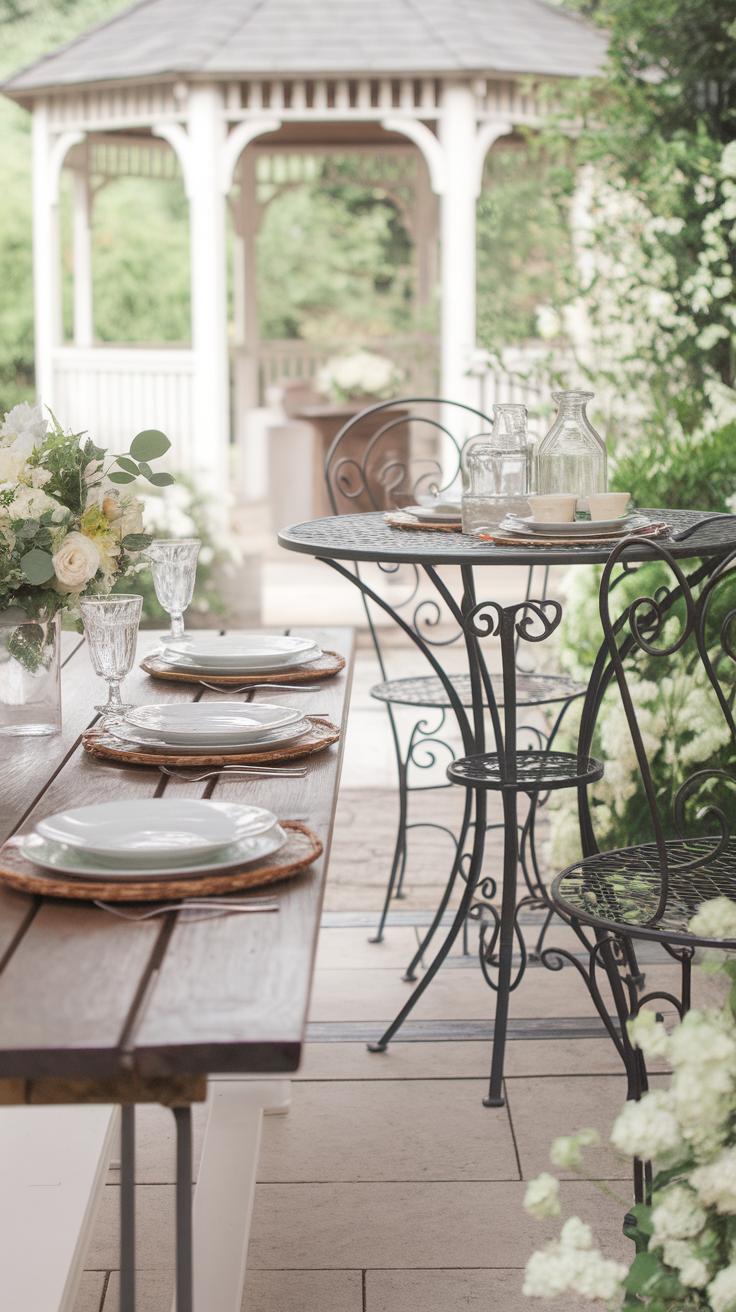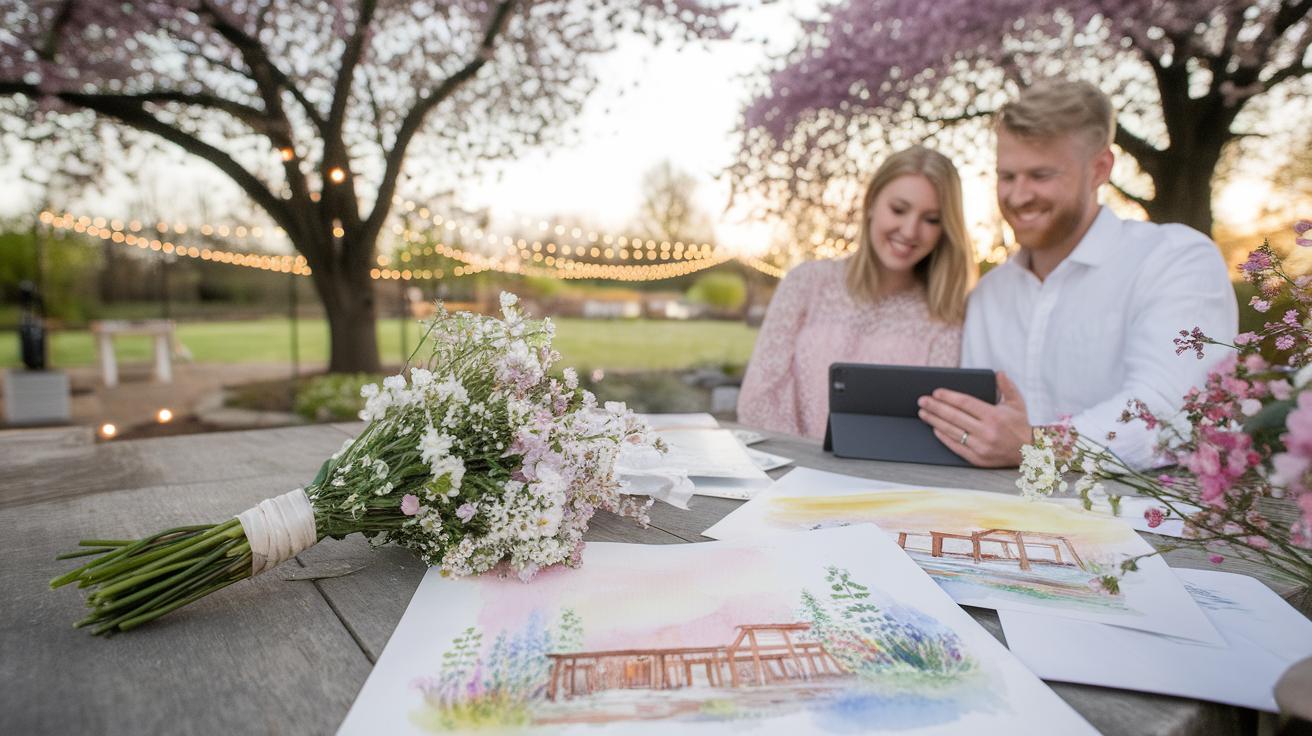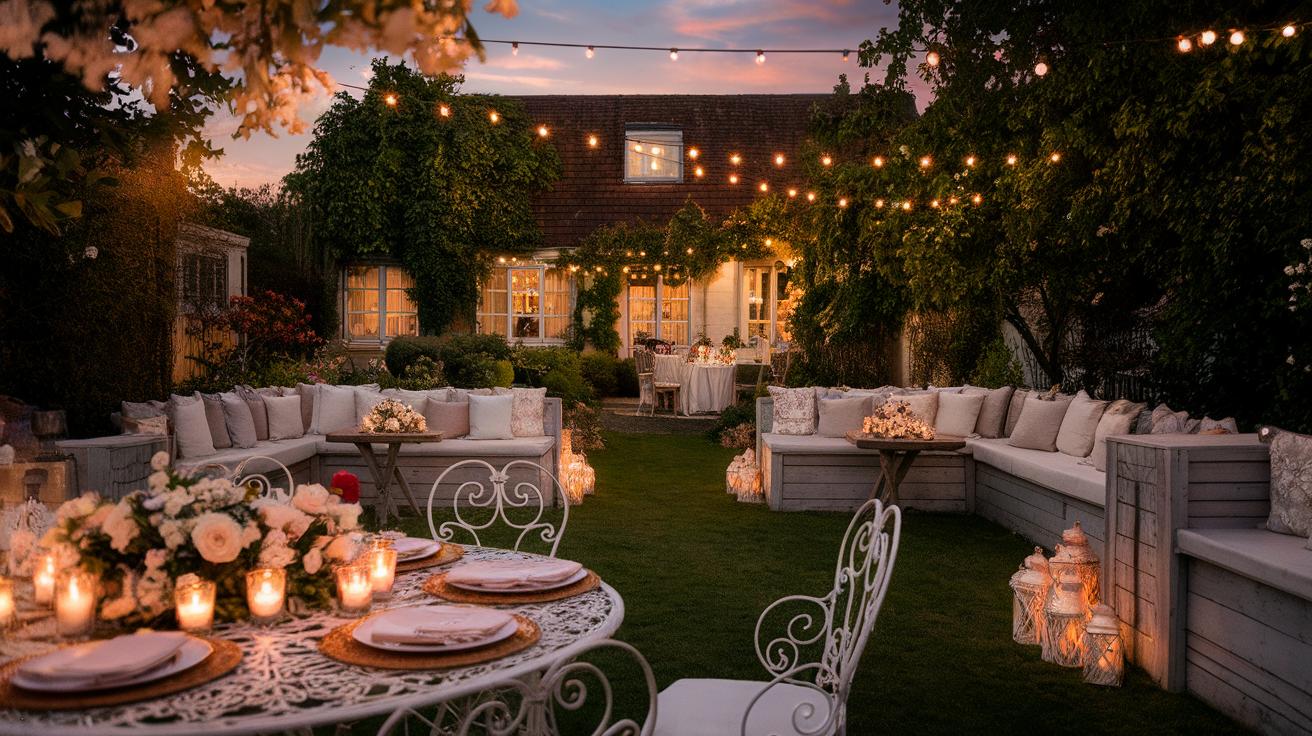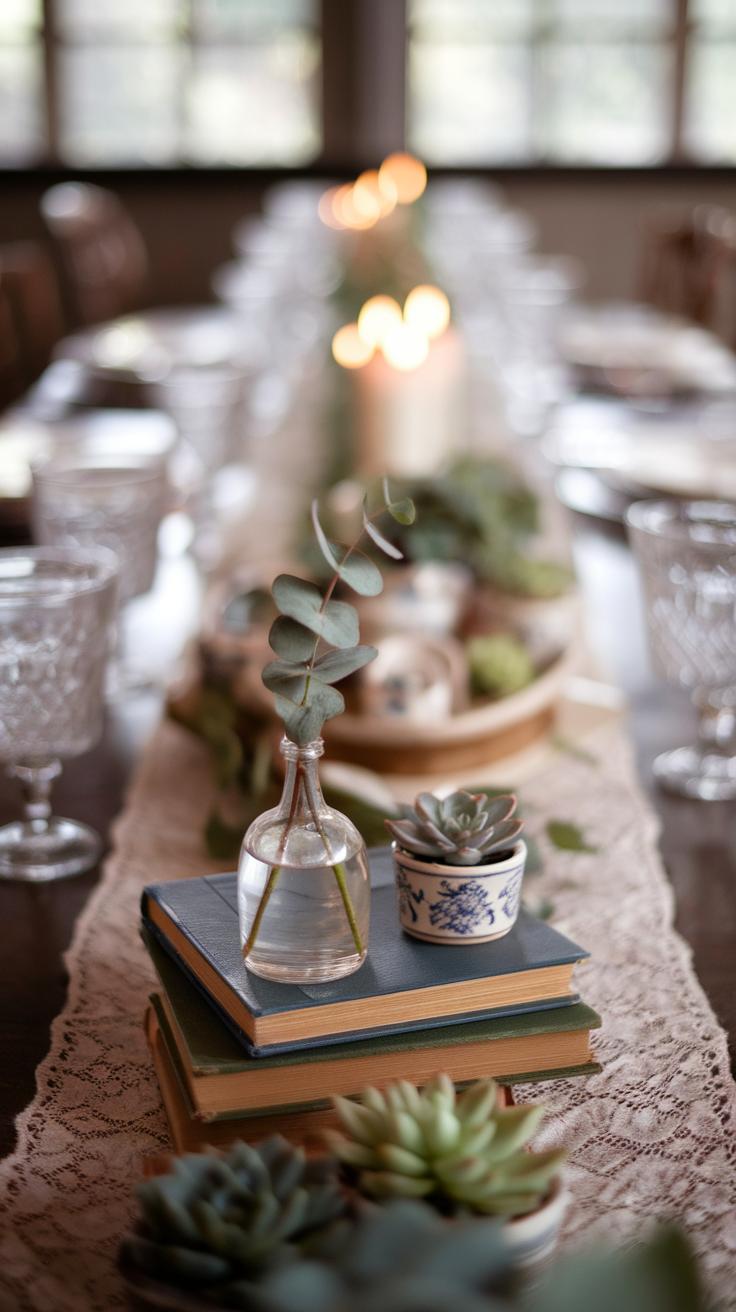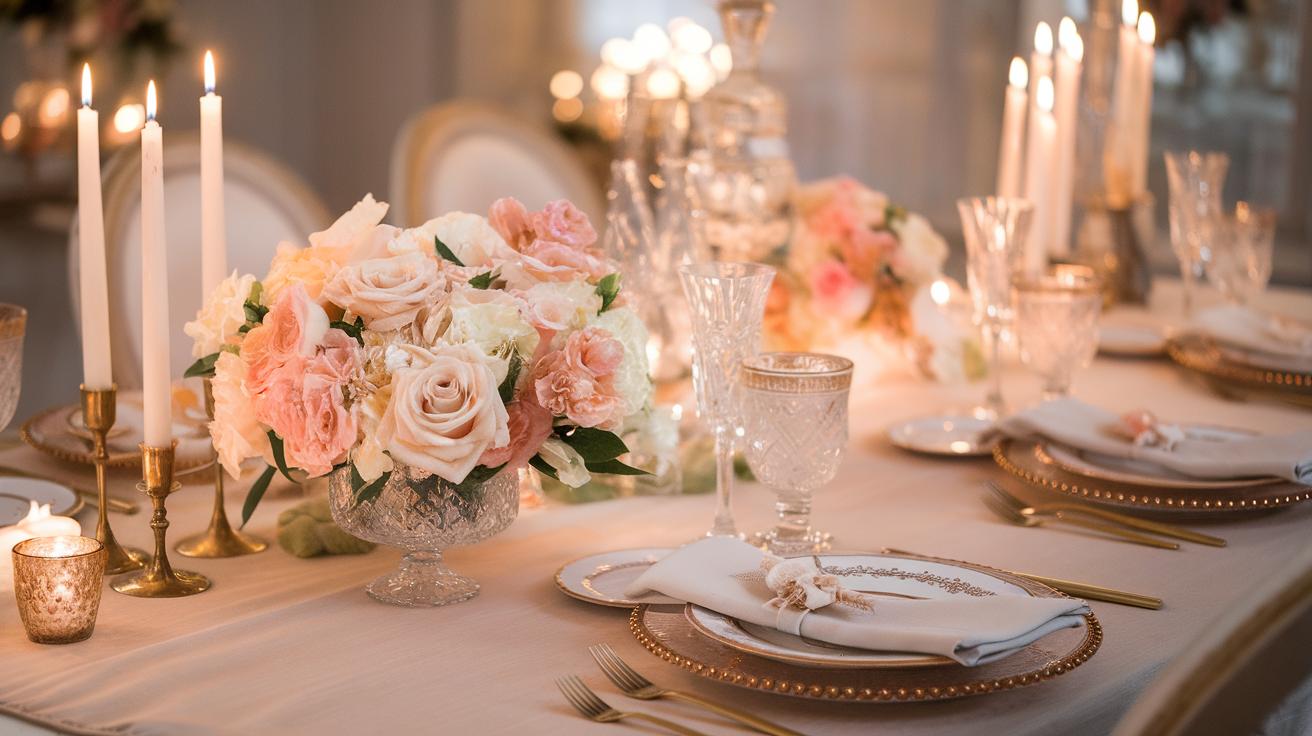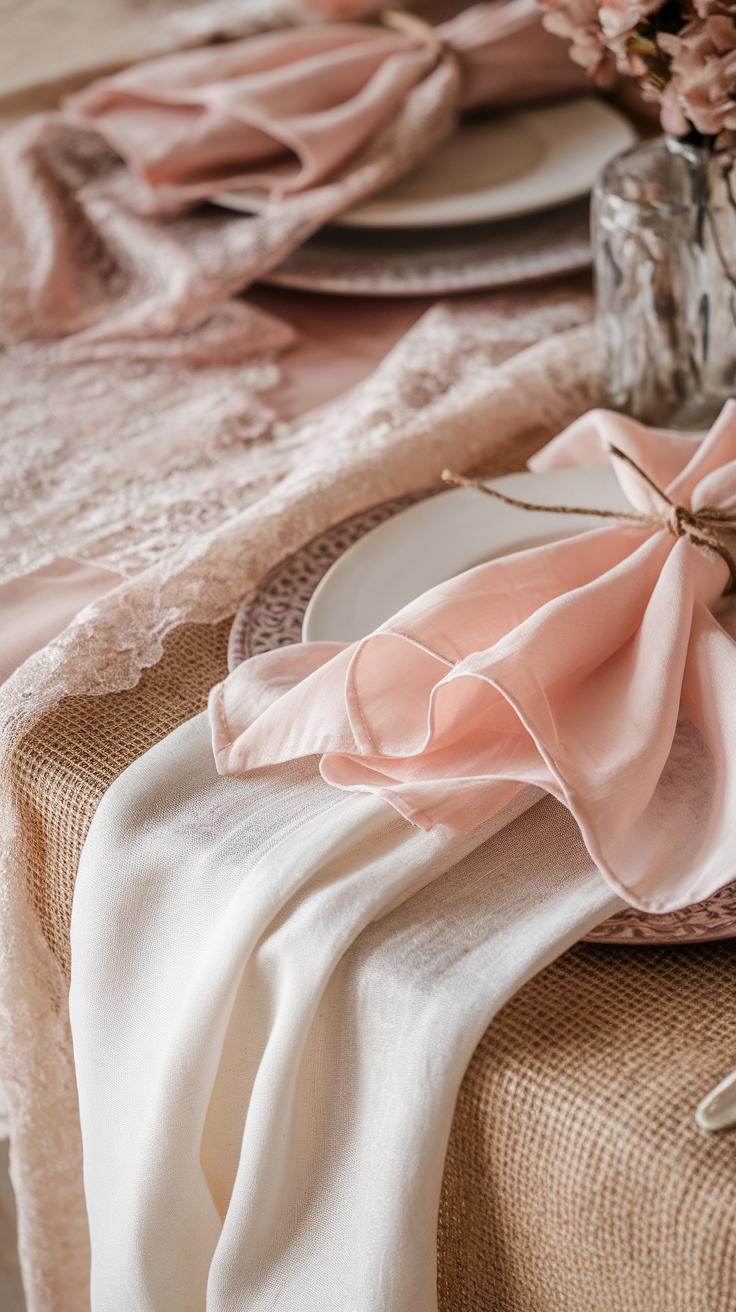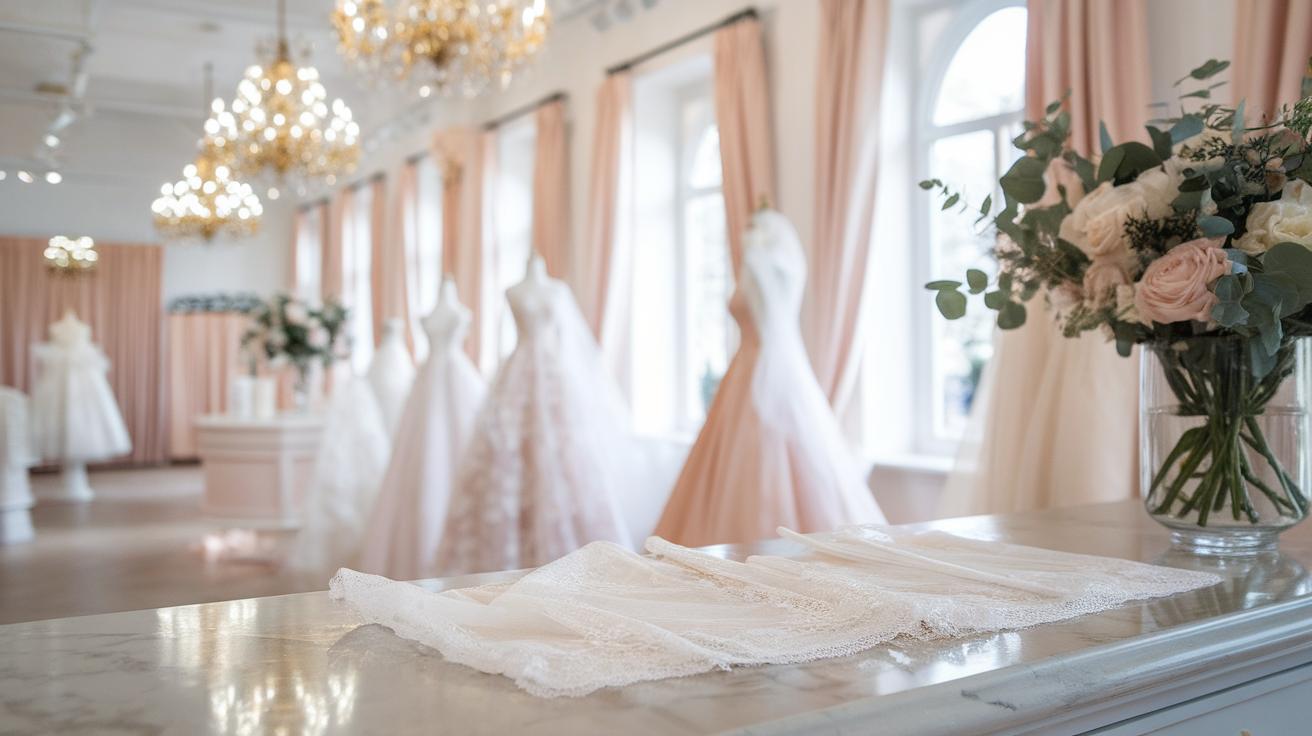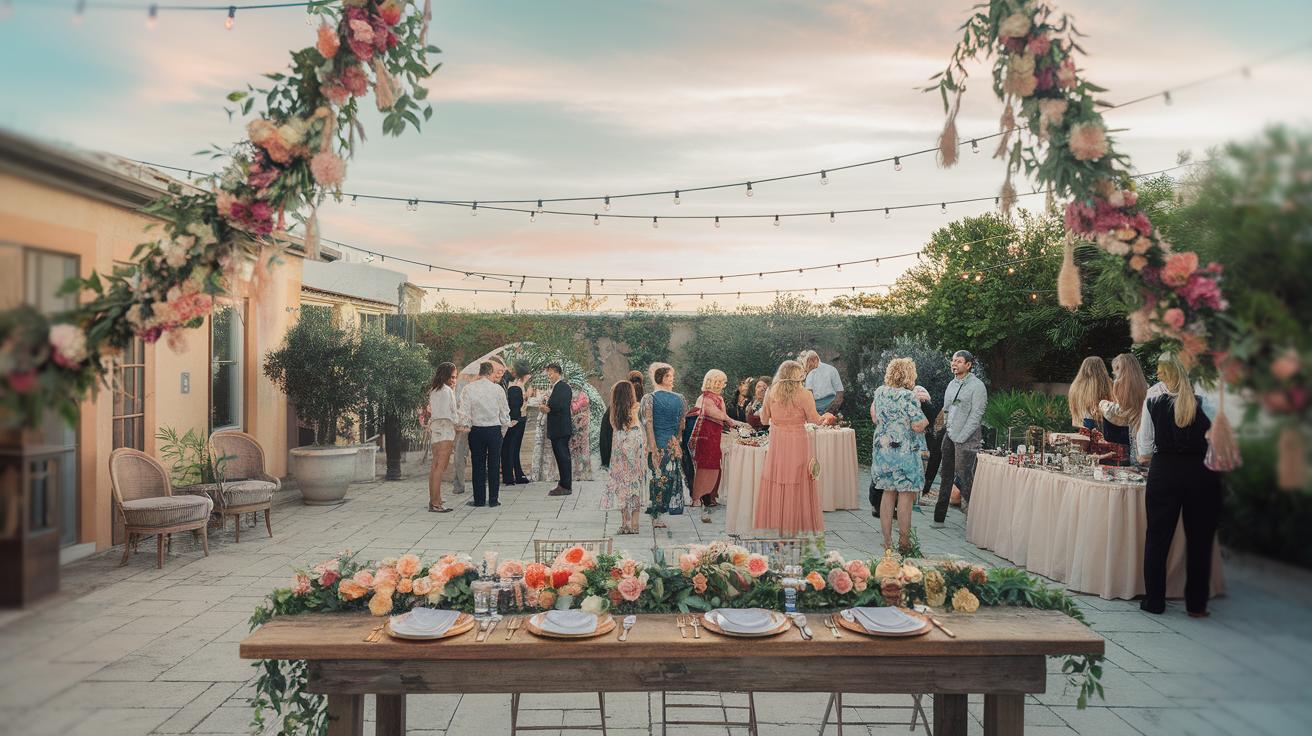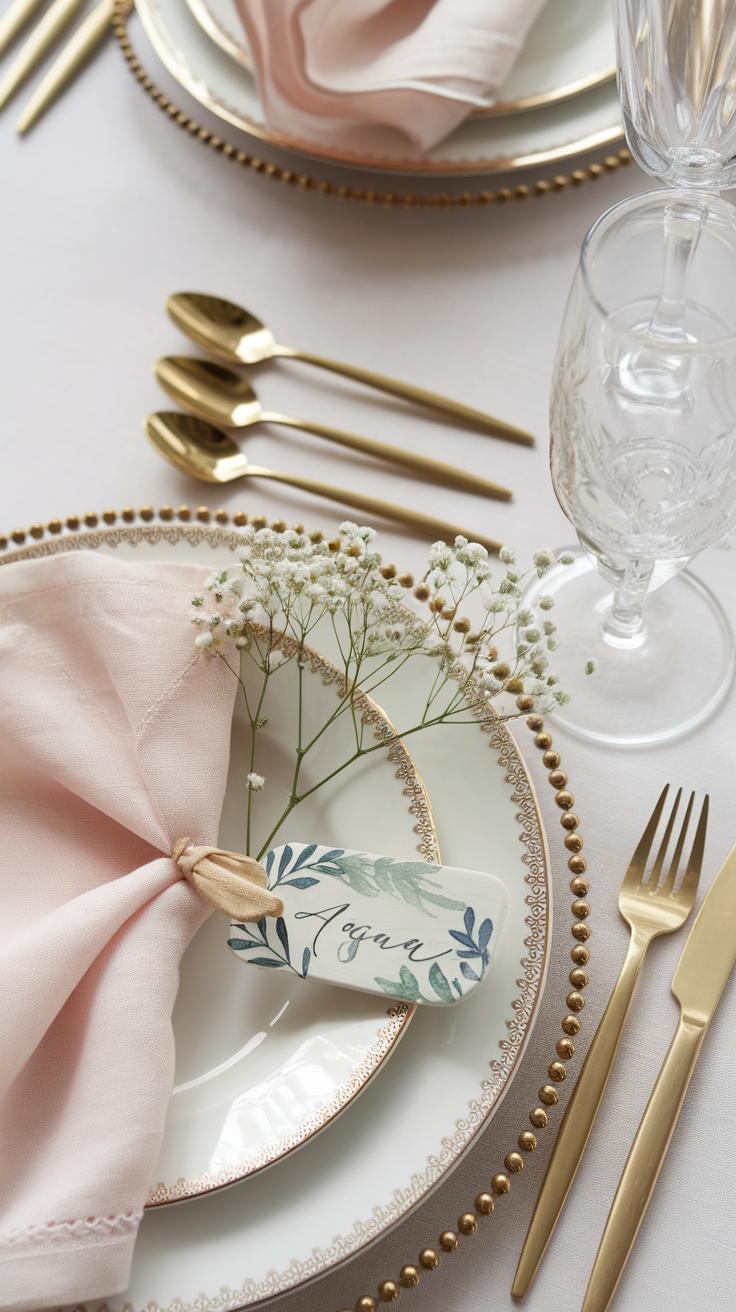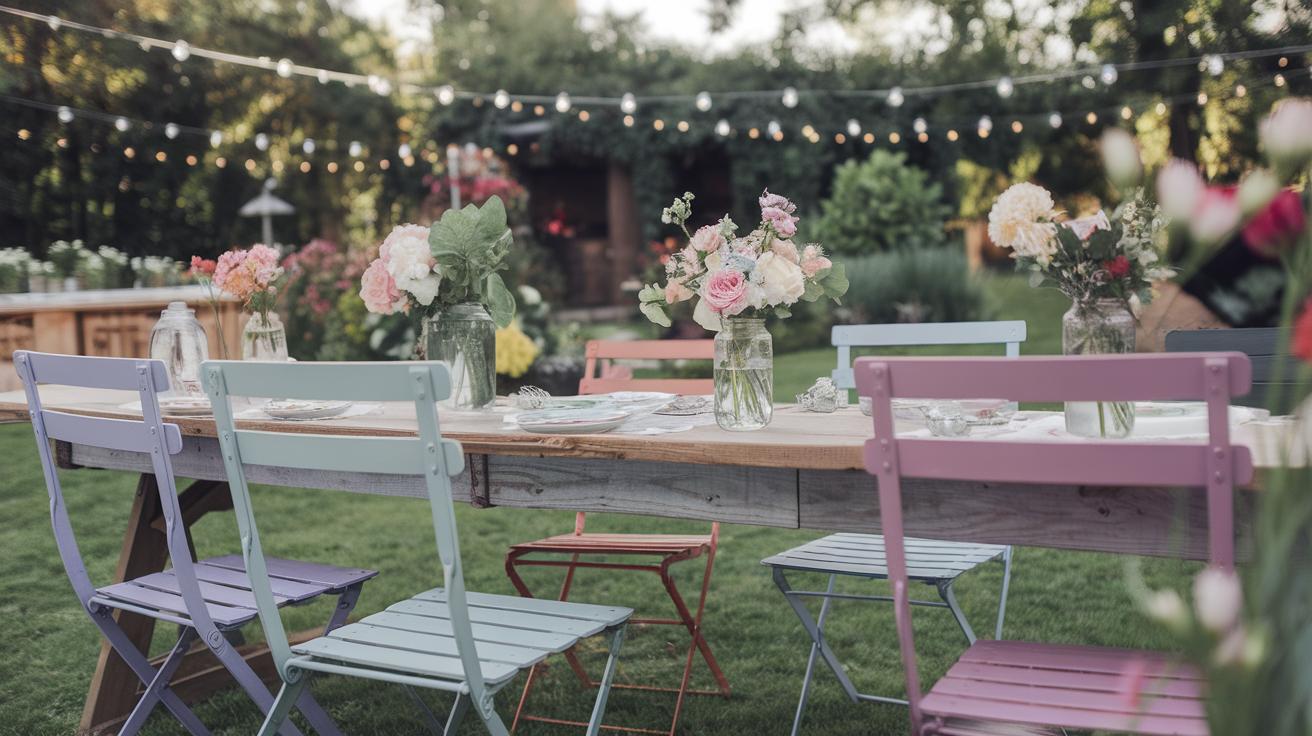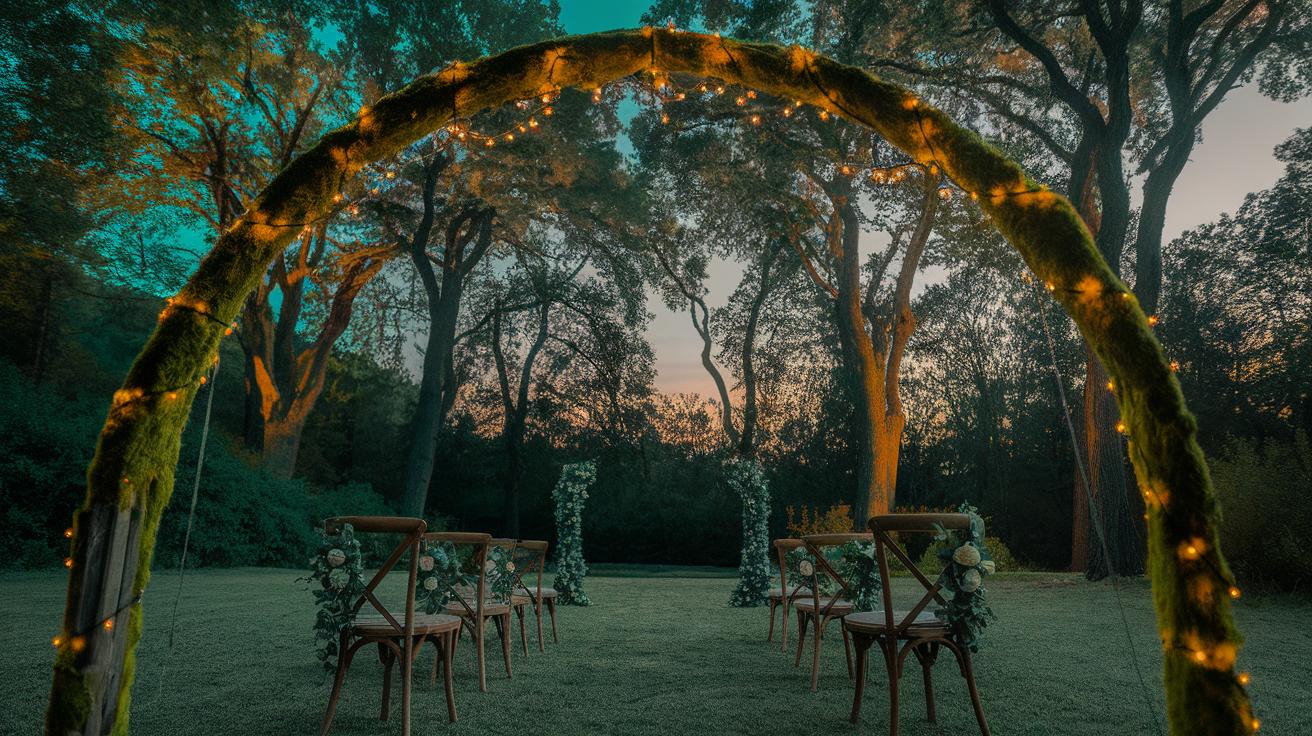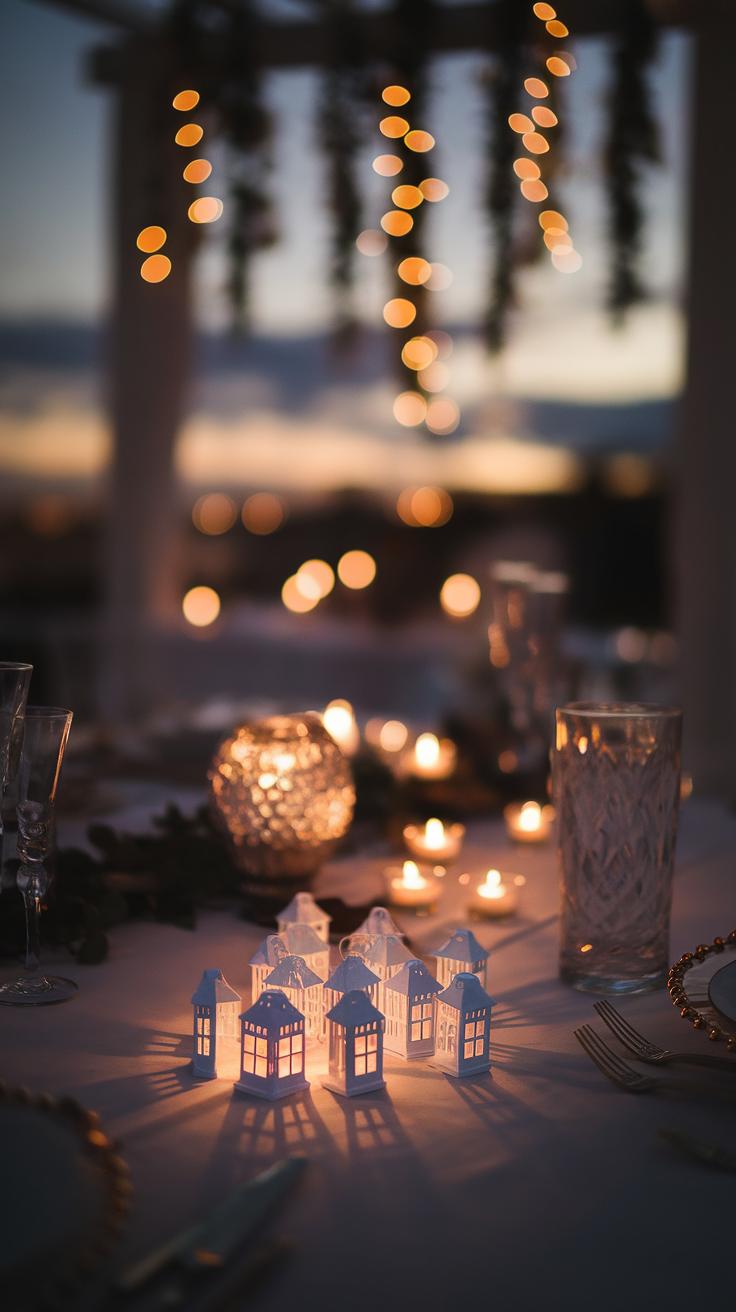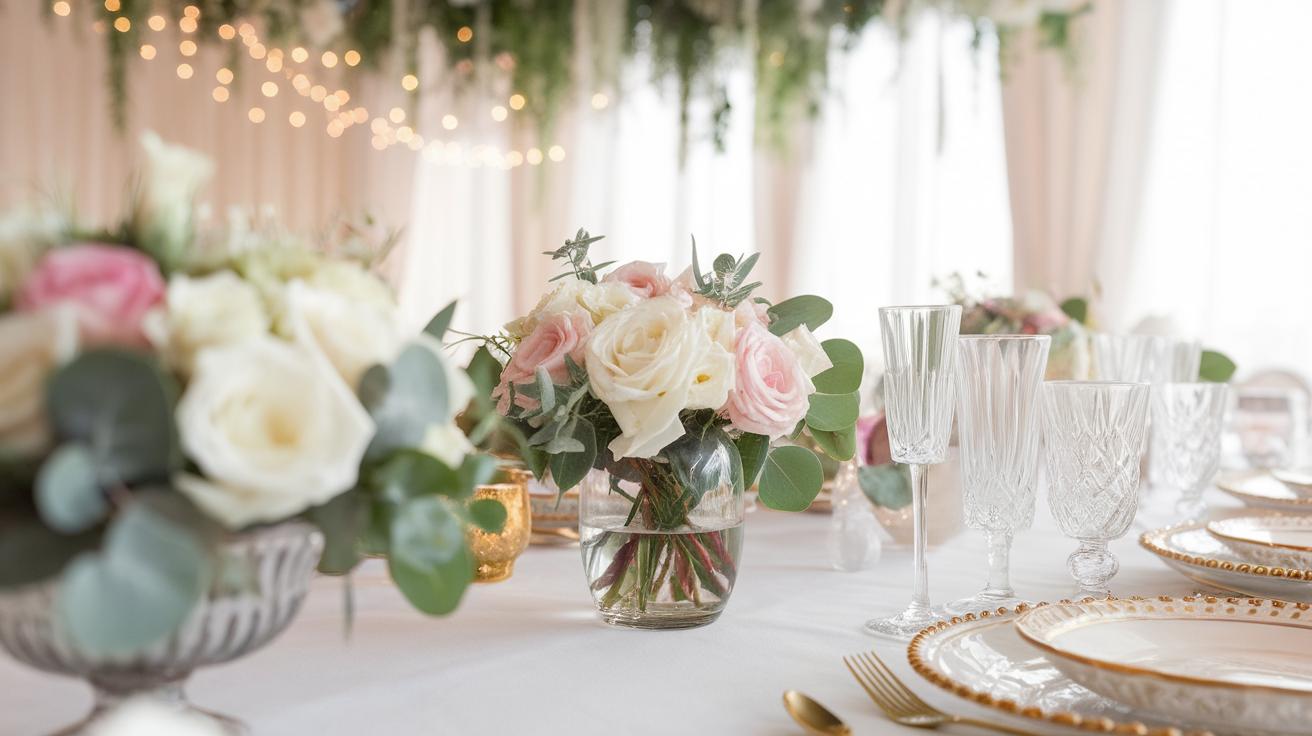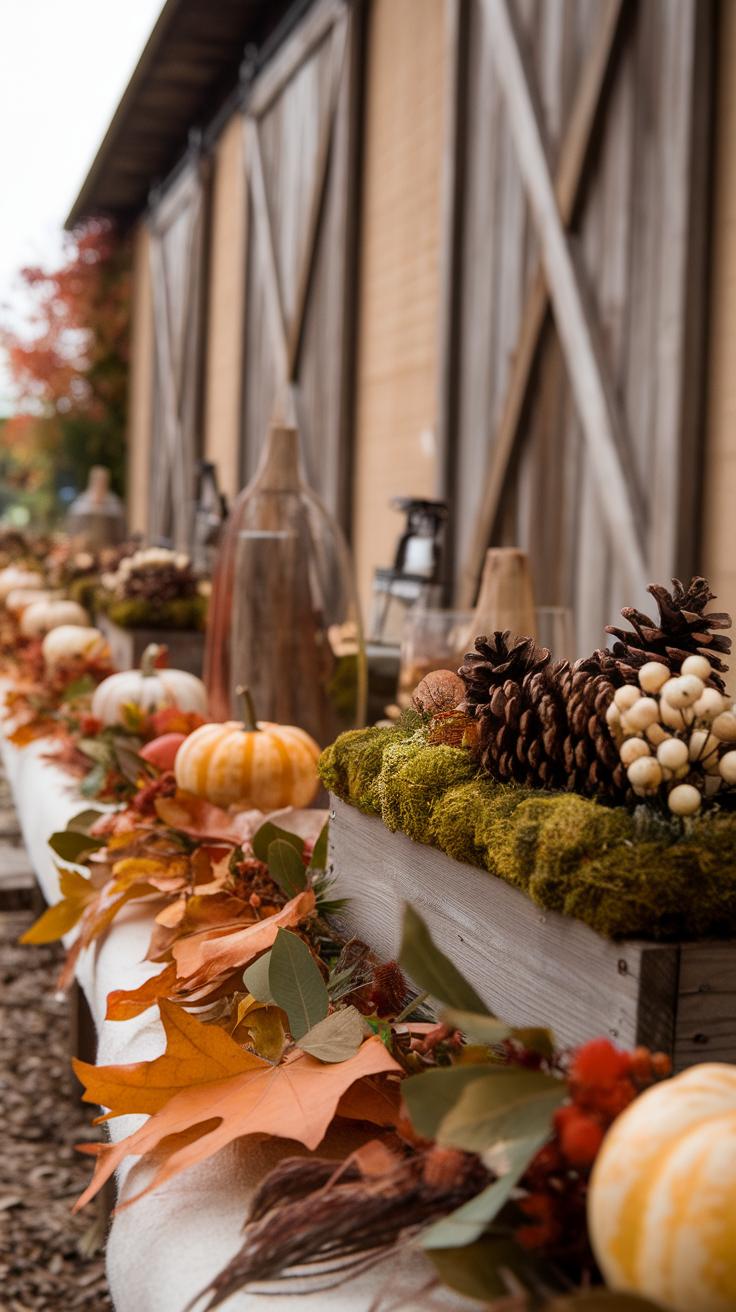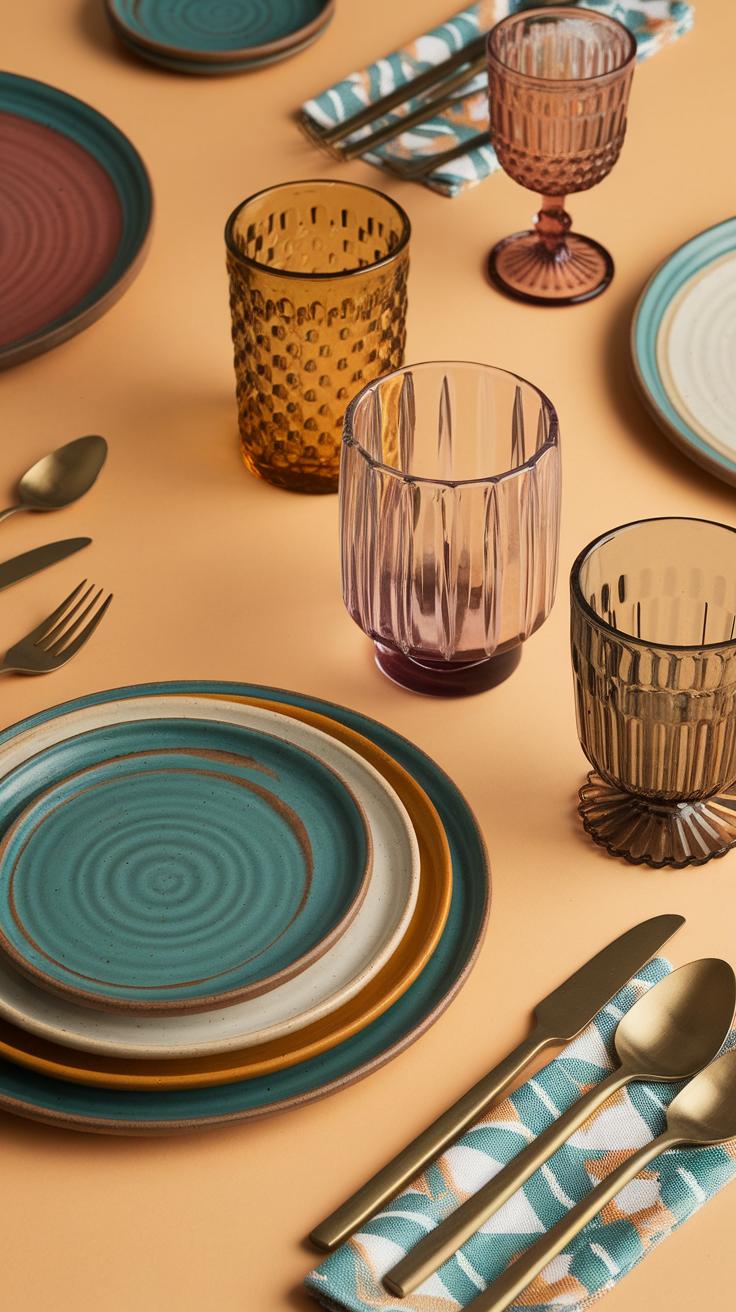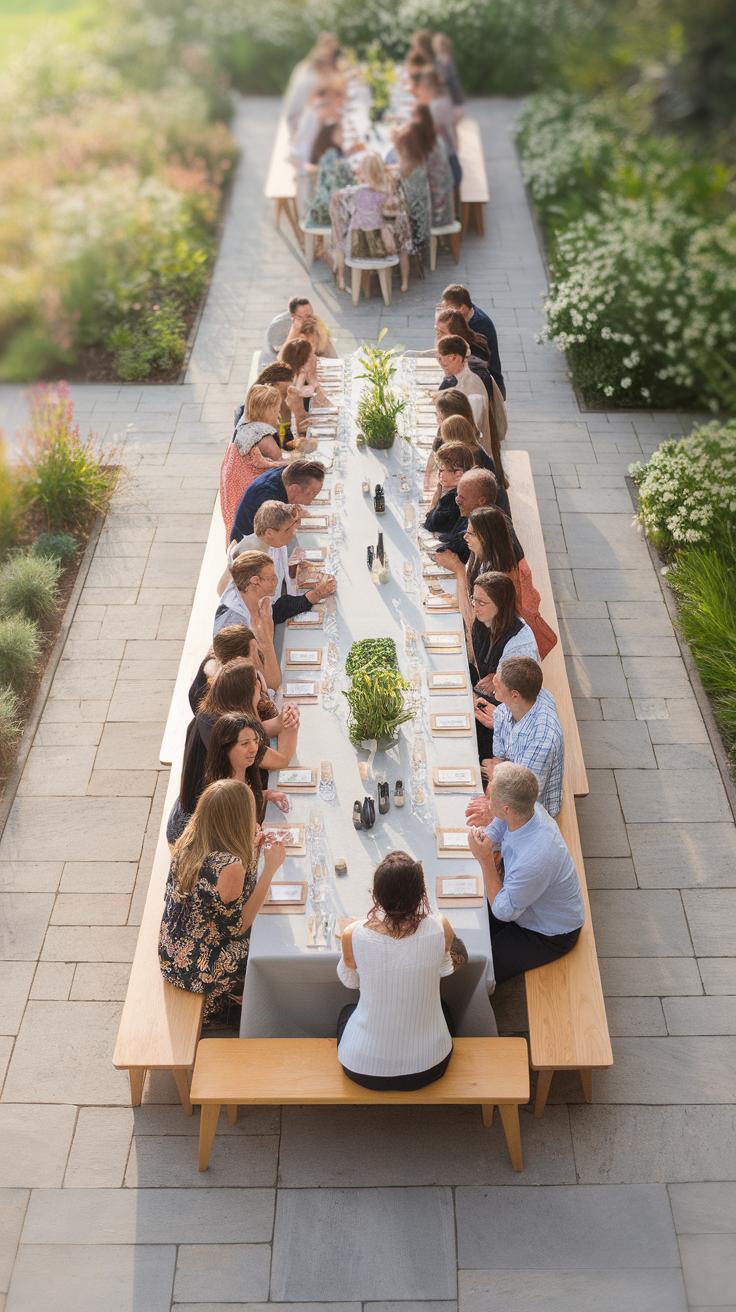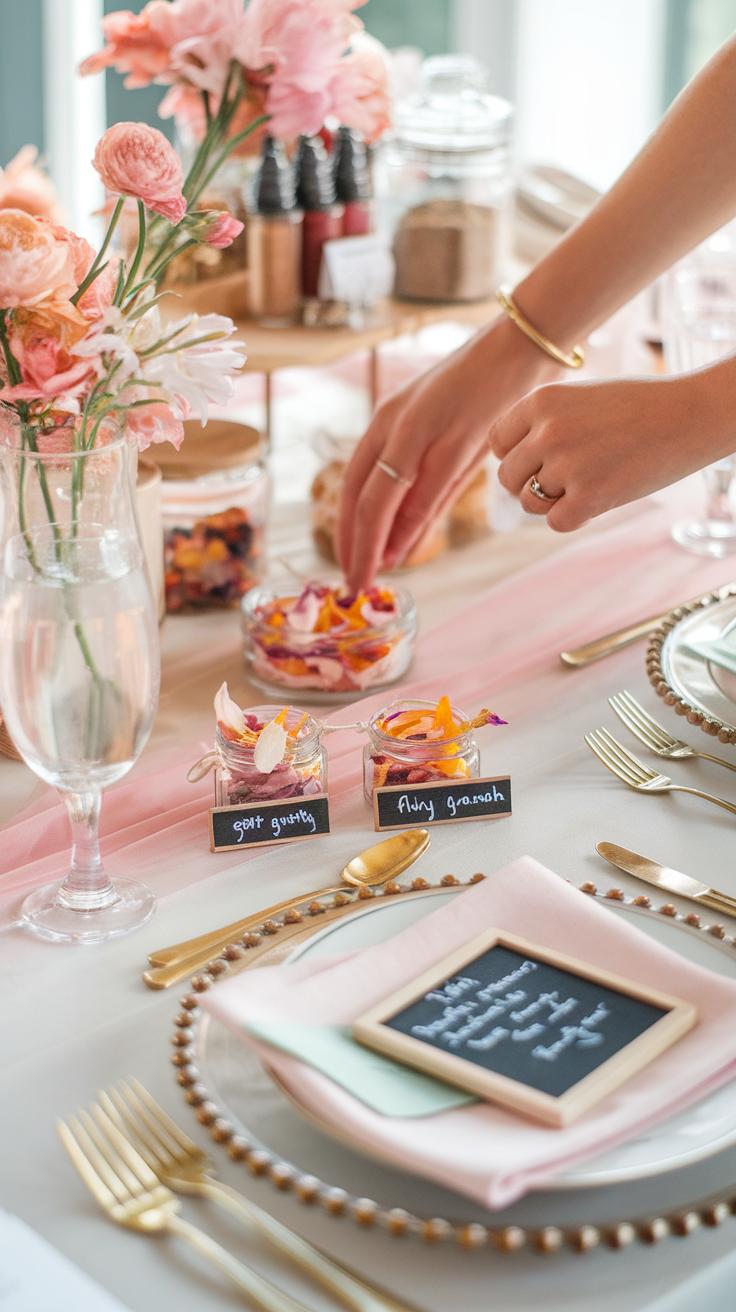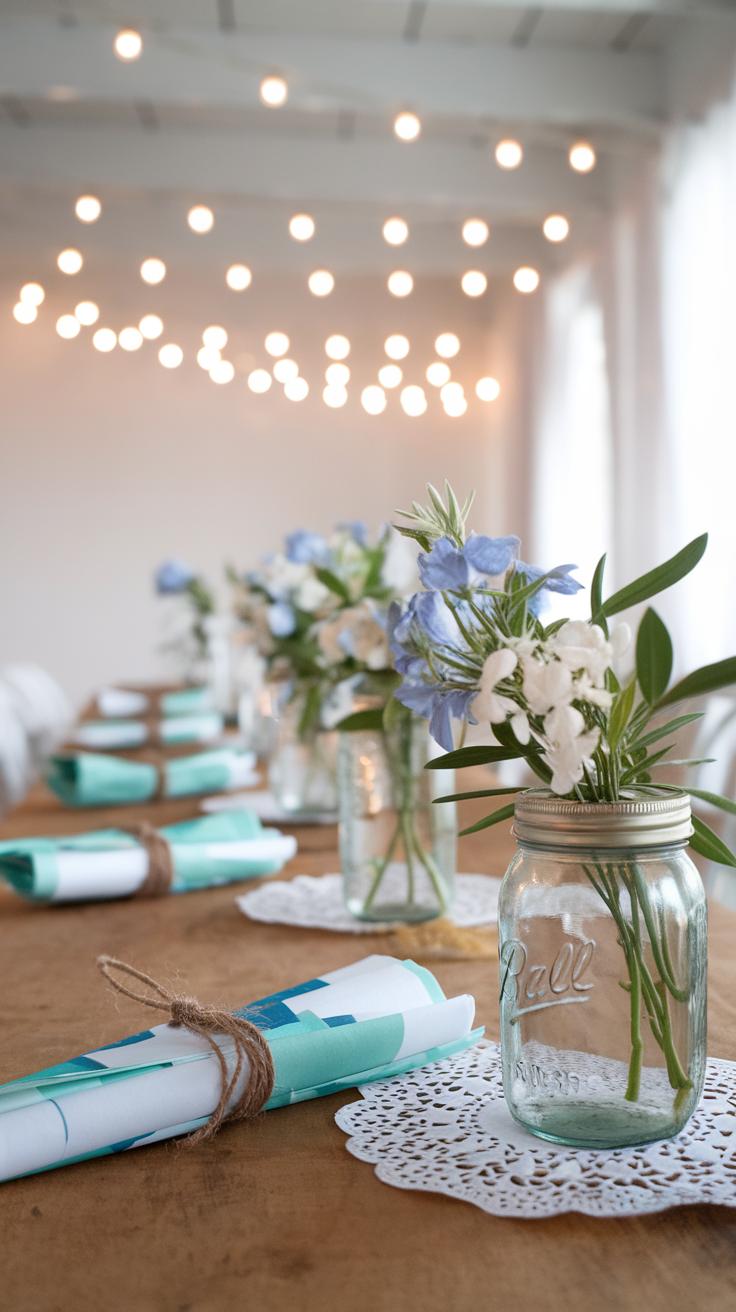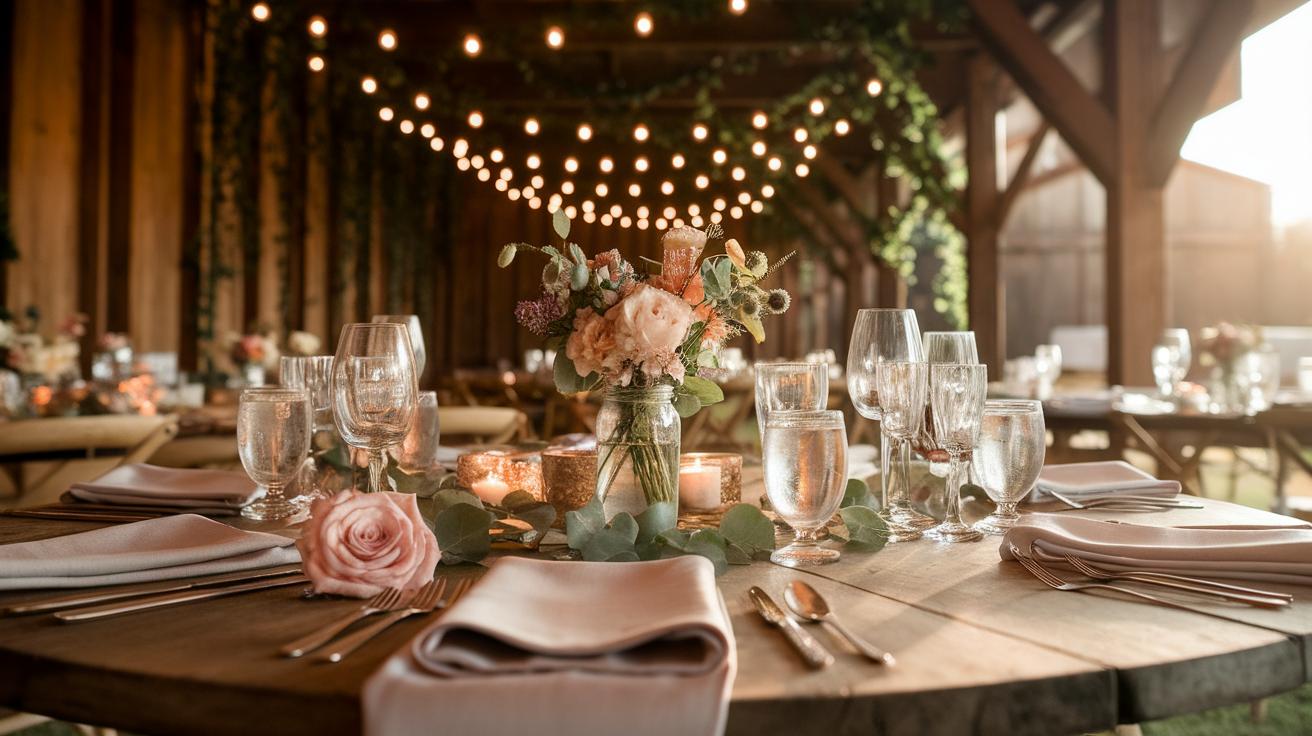
Creative Wedding Table Ideas For Intimate Receptions
Introduction
Planning a wedding table for an intimate reception requires thoughtful creativity. The table serves as the focal point for guests and plays a significant role in the overall wedding atmosphere. It can reflect your personality as a couple and make your guests feel special and welcomed. Unlike large weddings, intimate receptions offer a chance to focus on details, making the table arrangement and design even more important to create a warm, personal environment.
You can use the size of the intimate wedding to your advantage by customizing your table decorations, seating, and layout. This article will guide you through practical and creative ideas for designing your wedding table for an intimate gathering. These ideas will help you make choices that engage your guests, create lasting memories, and keep the focus on the meaningful moments of your special day.
Choosing the Right Table Shape and Size
Selecting the right table shape and size shapes your guests’ experience at an intimate wedding reception. Different table shapes impact how well people can talk and how the space feels overall. Round tables let everyone face each other, which helps conversations flow freely. Rectangular tables fit more guests in tighter spaces, but they can sometimes make some guests feel distant from others. Square tables balance the two, creating a cozier feel without being too crowded.
Size matters just as much as shape. Choosing tables large enough to seat your group comfortably helps keep the event relaxed. Avoid squeezing guests too close or leaving too much empty space. For a small reception, think about how many guests each table can seat without blocking movement or making conversations difficult. When you get this balance right, every guest feels part of the celebration.
Advantages of Different Table Shapes
Round tables work well for small groups. They allow you to look and speak to everyone at the table. This encourages deeper connections among your guests. Flat edges don’t get in the way of plates or flowers, making the table feel less cluttered. However, round tables take up more floor space, which might limit your options in a small room.
Rectangular tables make better use of narrow or awkward spaces. You can line them up or push them against walls, which maximizes seating capacity. This shape suits longer guest lists but can feel less inviting for conversations, especially with people seated at opposite ends. Square tables provide a middle ground. They use space efficiently and keep groups small enough for everyone to engage without turning heads too far around.
Measuring Your Space and Guest List
Measure the length and width of your venue area where guests will sit. Leave enough room for walking paths and service areas around tables. A good rule is to allow around 30 inches of space per guest at the table and at least 36 inches between tables for easy movement.
Match your tables to the guest count by calculating how many people fit comfortably per table shape and size. If your venue is tight, fewer guests per table will stop the room from feeling crowded. If you have more space, you can opt for larger tables or group several smaller ones together. Ask yourself: How many guests can sit without bumping elbows? Will the layout allow easy access to food, drinks, and bathrooms? Taking these steps helps you create a space where intimacy and comfort exist together.
Creative Centerpieces That Fit Small Spaces
Small wedding tables need centerpieces that don’t take up too much room but still catch the eye. Low floral arrangements work well because they allow guests to see each other and chat freely. Candles add warmth and a cozy glow without crowding the table. Consider using unique objects that mean something to you, like vintage trinkets or travel souvenirs. Personalized items, such as custom name tags or hand-written notes, make the setting feel intimate and special.
Compact centerpieces can feel just as important as larger ones. You might try grouping several small elements instead of one big item. Imagine a cluster of mini vases together or a mix of candles and natural objects like stones or shells. What personal stories do you want to highlight on your tables? Using tasteful and thoughtful designs helps create spaces that invite conversation and add character without overwhelming the table.
Low and Minimalist Floral Arrangements
Low floral arrangements keep the view across the table open. Flower stems cut short in shallow bowls or small vases work best. Designs using just one or two types of flowers keep the look simple and clean. You can add greenery for texture without raising the height. Try arranging blooms in a circular pattern so everyone sees the center without obstruction.
Using monochrome flowers or delicate blossoms like baby’s breath or succulents creates a minimalist feel. Have you thought about pairing flowers with elements like small branches or moss for interest? When the centerpiece stays low, guests can maintain eye contact, which is key to an intimate gathering. Less really can be more in creating space and connection.
Incorporating Personal Elements
Adding personal touches to your centerpieces makes the tables memorable. Place small framed photos of meaningful moments or family members at each table. Favorite books stacked in small piles can reflect your interests together. Handmade objects or gifts from loved ones bring warmth and story to your décor.
Think about tokens from your relationship, such as concert tickets, postcards, or travel keepsakes. What would your guests find interesting to learn about you? Personal objects create a sense of closeness and spark conversations. You don’t need large items; even a simple charm or a handwritten note can turn your centerpiece into a meaningful display.
Table Linens and Textures for Visual Interest
Choosing the right table linens can transform your wedding table into a visual centerpiece on its own. Different fabrics create distinct moods—smooth satin adds elegance, while raw linen offers a relaxed, natural feel. You can combine textures to avoid a flat look. For example, pairing a soft chiffon overlay with a rustic burlap runner brings contrast that catches the eye.
Think about your wedding theme when selecting fabrics. A beach wedding might call for airy, light fabrics in soft blues, while a cozy autumn celebration could use heavier linens in warm shades. Texture also affects how light interacts with the table, adding depth and dimension. What kind of atmosphere do you want your guests to feel as they sit down? This question can guide your choices.
Layering different fabrics or mixing rough and smooth textures helps tables feel finished without needing too many accessories. By carefully choosing linens, you add richness and interest to your intimate reception without overcrowding the table.
Layering Fabrics and Textures
Layering linens involves using a base tablecloth with additional pieces like runners, placemats, or napkins on top. For a small wedding, try a solid-colored tablecloth under a patterned runner to add dimension. Using contrasting textures, such as a crisp linen tablecloth with a soft velvet runner, creates depth and invites guests to touch and feel.
You can play with length and shape too. A floor-length tablecloth can offer elegance, while a shorter cloth with layered runners can feel casual and inviting. Napkins are another layer—folded or tied with natural twine or a decorative ring, they add another textural element.
Combining these layers thoughtfully leads to a table that looks thought-through and custom-made for your wedding day. What mix of fabrics excites you the most?
Choosing Colors That Match Your Theme
Matching your linens to your wedding colors creates a harmonious look that ties every detail together. If your palette includes soft pastels, opt for linens in pale pink, lavender, or mint to maintain softness. For bold color themes, such as deep reds or navy, linens can either match exactly or provide a complementary contrast, like cream or gold tones.
Consider the setting as well—outdoor weddings with natural backdrops may benefit from earth tones that blend with the surroundings, while indoor venues often allow for richer colors to brighten the space. Sticking to two or three coordinating colors keeps the table cohesive and visually pleasing.
What feeling do you want your color choices to inspire? Calm and serene, energetic and fun, or timeless and classic? Your linen colors will help set that mood quietly but effectively.
Personalized Place Settings
Personalized place settings bring a special touch to intimate weddings. They create a sense of connection between you and your guests. When each guest’s spot feels unique, it makes the celebration more engaging and warm.
Custom name cards show you value each guest’s presence. You can match the design to your wedding theme or choose materials that tell a story. Unique napkin folds invite a closer look and add elegance without needing extra decor. Small individual favors at each seat make guests feel seen and appreciated. These can be simple, like a handwritten note or a tiny keepsake.
Think about how these details might start conversations or spark smiles at the table. How personalized can you make your place settings? This effort helps your guests feel part of a meaningful moment, turning your wedding into a more personal experience.
Custom Name Cards and Holders
Custom name cards help guests find their places quickly and add character to your table. You can use materials like wood, acrylic, or textured paper that tie into your wedding’s style. For example, a rustic wedding might feature kraft paper with calligraphy, while a modern event could use sleek metal holders.
Name holders bring variety and can become small accents on the table. Mini easels, vintage clips, or folded card stands work well. Consider adding small photos of guests or meaningful symbols to name cards. This creates a personal connection and shows that each guest’s presence matters.
What style will reflect your personality and bond with those attending? Choosing name cards and holders that speak to your story will make the table both functional and memorable.
Unique Napkin Folding Techniques
Napkin folds instantly enhance the look of your table. Simple folds can look fresh and elegant without much effort. Try folding napkins into shapes like fans, pockets, or triangles to hold cutlery or a personal note. These designs add depth and texture to each place setting.
You might also fold napkins into symbols meaningful to you, like hearts or flowers. Using contrasting napkin colors or delicate ribbons can further highlight each fold. This small detail causes guests to notice the care put into the setting.
Have you considered how a well-chosen napkin fold might impress your guests? It’s an easy way to add personality that stands out, feeding into the overall mood of your intimate reception.
Lighting Ideas to Enhance Intimacy
Lighting plays a big role in shaping the mood at your wedding table. Soft, warm light can make the space feel cozy and personal. Think about using several light sources to create layers of glow that invite conversation and connection. Candles provide a natural flicker that draws eyes and sparks warmth. String fairy lights nearby add a gentle sparkle without overwhelming the senses. Small lamps can offer steady pools of light to highlight centerpieces or place settings.
Combining these options lets you play with brightness and shadows, setting the perfect tone for your intimate celebration. Ask yourself: what mood do you want your guests to feel? Will you lean toward calm and quiet or lively and inviting? Arranging lights at different heights and distances gives depth and charm to the table. Above all, make sure your lighting keeps your guests comfortable and enhances the personal vibe you aim to create.
Using Candles Safely and Effectively
Select candle types that fit your space and safety needs. Pillar candles work well on sturdy holders, while votives create smaller pools of light. Flameless candles offer safety without losing the warm glow. Place candles on non-flammable surfaces and away from anything that could catch fire, like napkins or floral arrangements.
Mix candle heights to add visual interest, but avoid overcrowding the table. Use heavy or broad holders with a solid base to prevent tipping. If you want to create a dramatic effect, put candles inside glass containers or lanterns to protect the flame. Always keep a fire extinguisher or water nearby to be prepared. Candles draw attention—think about how their placement highlights your personalized place settings without blocking views.
Incorporating Fairy Lights and Lamps
Fairy lights bring a touch of softness to your wedding table. You could weave them through greenery or drape them along the edges of the table. Battery-operated strands are easiest to manage and avoid tangled cords. Small lamps with warm bulbs add focused light where needed, perfect for dinner tables or dessert stations.
Try grouping fairy lights in glass jars for a gentle lantern effect, or wrap them around centerpiece elements for a subtle glow. Lamps with dimmers give you control to adjust the light level during the evening. Mixing lamps and fairy lights creates a warm, inviting atmosphere that suits intimate celebrations. Consider how these lights play with your personalized place settings and natural decorations to keep your table visually balanced and welcoming.
Incorporating Nature and Seasonal Elements
Your wedding table can feel fresh and inviting by adding natural and seasonal touches. Using elements that reflect the time of year helps the setting feel connected to your celebration. You might consider seasonal flowers, fresh greenery, or fruits that highlight the colors and mood of the season. These choices create a vibrant table without needing elaborate decorations. Think about how a handful of sprigs of rosemary in winter or bright oranges in fall can add life and scent to your table. You want your guests to feel the season’s spirit as they gather around, making the moment feel more personal and true to the time of year. How can your table reflect the unique character of the season you are celebrating in?
Seasonal Flowers and Greenery
Picking flowers and greenery that bloom in your wedding season helps your table look natural and intentional. If your wedding is in spring, soft tulips or daffodils fit beautifully, while summer weddings might shine with sunflowers or lavender. Look for colors that match or complement your palette. Greenery like eucalyptus or ferns can act as a backdrop to your blooms and keep the look grounded. Local florists typically know what’s in season and can suggest options that last well during your celebration. Seasonal plants cost less and stay fresh longer. Have you thought about which flowers tell the story of your wedding day best?
Natural Decorations Beyond Flowers
Try using materials like pinecones, berries, or fruits to add texture and interest to your table. In autumn, small pumpkins or colorful apples add warmth and depth. Winter tables can sparkle with pinecones and red berries, while spring and summer allow for citrus fruits and leafy branches. These elements give your guests something interesting to look at and even to touch. Mixing these items with your flowers and greenery can prevent the table from feeling flat. You can even personalize these with painted or tied ribbons matching your wedding colors. What natural accents could make your table feel alive with the season’s personality?
Unique Tableware to Reflect Your Style
Your choice of tableware plays a key role in shaping the look and feel of your wedding table. Vintage plates bring a sense of history and charm without taking up much space. Imagine delicate floral patterns or gold trims creating a soft, elegant touch. Colored glassware can add pops of personality, whether with deep blues, soft greens, or warm amber tones. Handmade ceramics offer a tactile, earthy appeal, often featuring subtle textures and imperfect shapes that highlight the artisan’s touch.
Each piece of tableware can echo your wedding theme and tell a story. For example, rustic ceramics fit well with a countryside celebration, while vintage china suits a classic or retro style. Choosing unique tableware lets you express your personal taste while keeping the table inviting and comfortable for guests. How can your wedding plates and glasses add flavor to the overall design without crowding your intimate space?
Finding Vintage and Artisan Tableware
Look to thrift shops and estate sales for vintage plates that carry a sense of nostalgia. These sources often hold unexpected treasures like delicate porcelain or hand-painted designs. Artisan markets and local pottery studios provide handmade ceramics with unique finishes and colors that mass-produced dishes can’t match.
You might also explore online platforms dedicated to vintage and handcrafted goods. When searching, consider how the colors and shapes of the pieces will blend with your overall wedding colors and decorations. Avoid buying in large matching sets; select varied pieces that complement each other to keep the table lively and warm. Have you checked your local community markets for hidden gems yet?
Mixing and Matching Styles
Combining different styles of tableware creates an eclectic atmosphere that suits small weddings perfectly. Pair floral vintage plates with solid-colored handmade bowls for balance. Use an array of colored glasses to reflect the hues in your flowers or linens.
Do not shy away from mixing shapes and textures. Round plates, square chargers, and uneven ceramic bowls placed together provide visual interest. When working with colors, limit your palette to two or three main tones to avoid visual clutter. Decide on a common thread, like similar patterns, colors, or material, to tie the mix together. This way, your table remains coordinated without feeling forced. How much variety feels right for your table without losing harmony?
Maximizing Guest Interaction with Seating Layout
How you arrange seating affects how much your guests talk and enjoy their time together. At intimate weddings, tables offer a chance to bring people closer and spark real conversations.
Keep tables small enough to allow everyone to hear each other easily, usually seating six to eight people. Arrange chairs so guests face each other rather than sitting side by side or in long rows. Round or square tables help people make eye contact, encouraging more natural exchanges.
Leaving some space between seats allows guests to move comfortably without feeling cramped. Avoid crowding people, which can make conversations tense or rushed. Instead, provide room for relaxed chatting.
Group guests by mixing those who know each other well with those meeting for the first time. For example, seat close friends next to family members to bridge common bonds. Ask yourself: who shares interests or values that could spark good conversations? Seating your guests thoughtfully can turn strangers into new friends and quiet dinners into lively moments.
Seating Patterns to Promote Engagement
Seating shapes how people talk and connect. Round tables let everyone see one another, making it easier to join group conversations. Smaller square or rectangular setups work well when you want guests in pairs or trios to chat more intimately.
Experiment with seating in a U-shape or horseshoe to keep guests facing the center. This layout helps when you want lively group discussions or to highlight moments like toasts. Avoid long banquet-style rows for intimate gatherings, as they limit interaction to neighbors only.
You might also try mixing seating arrangements within your reception space: some round tables for group chats alongside smaller, paired sets for quiet conversations. Changing up how people sit encourages different types of engagement and keeps the energy fresh.
Balancing Familiar and New Faces
Mixing people who know each other with new faces can create richer, more dynamic conversations. Pair close friends with family members they haven’t met often to open new dialogue paths. For example, sit a cousin next to a childhood friend—what shared stories could they discover?
Group guests who share hobbies or professions, even if they come from different social circles. A gardener might enjoy chatting with a chef or artist at the same table. Invite them to share experiences or tips, which can break the ice quickly.
Ask guests in advance about interests or backgrounds to help place them thoughtfully. You can also assign conversation roles, like someone who introduces others or asks fun questions. How could you turn your seating into a way for people to learn and connect beyond their familiar circles?
Adding Interactive Elements to the Table
When designing your wedding table, adding interactive features can make the experience more memorable. Interactive elements invite guests to participate actively rather than just observe, creating shared moments that everyone remembers. These touches encourage conversations and laughter, helping guests connect in a small, intimate setting.
Simple additions like personalized guest books or message cards give loved ones a chance to share their thoughts and kindness directly at the table. These notes become keepsakes for you, full of personal memories and well-wishes from your closest friends and family.
Table games and conversation starters also work well to spark interaction. Small, low-pressure games or thoughtful questions can break the ice and motivate your guests to engage with one another. When people talk and laugh together, they form bonds that outlast the celebration itself.
Guest Books and Notes
You can place individual guest books or message cards on each table, designed to fit your wedding style. Ask guests to write advice, memories, or wishes while they wait for dinner. This invites participation and keeps your guests engaged during quieter moments.
Try including prompt cards with ideas such as “Share your favorite moment with the couple” or “Write down a piece of advice for a happy marriage.” You could also use a small chalkboard or a jar where guests drop notes throughout the evening. These personalized touches transform your wedding into a collaborative story made by everyone present.
Table Games and Conversation Starters
Simple games can bring fun and energy to your wedding tables. Consider card games like “Two Truths and a Lie” about the bride and groom or trivia questions about the couple’s history. These encourage laughter and storytelling.
Another option is to include a stack of conversation starter cards. Questions like “What’s your favorite memory with the couple?” or “What advice would you give for a happy marriage?” inspire guests to share personal stories. These easy activities spark interaction even among strangers, making your intimate reception feel more connected and lively.
BudgetFriendly Tips for Intimate Wedding Tables
Creating eye-catching tables for your small wedding doesn’t have to break the bank. Focus on a few key elements that highlight your style instead of trying to fill every inch with decor.
Keep your decorations simple but meaningful. Choose items that reflect your personalities or story as a couple. This approach turns your tables into conversation starters without extra expenses.
Look for local suppliers or online shops offering discounts on floral arrangements, linens, and tableware. You might find affordable options that fit your vision perfectly.
Do you really need fresh flowers at every spot, or will a few strategic bunches make more impact? Prioritize what guests will notice most. Investing in quality table runners or candles can create a warm atmosphere without a high price tag.
Small touches often create the biggest impact. Let creativity lead your budget choices and design tables that feel personal and inviting.
DIY Decorations and Upcycling Ideas
Make your own table decorations using materials you already have or find cheaply. Mason jars can become charming candle holders or flower vases with a bit of paint or twine.
Old books, fabric scraps, or glass bottles add character when reused creatively. Cut paper doilies, folded napkins, and handmade place cards show care without a large cost.
Consider natural elements like pinecones, branches, or leaves gathered from outside. These add texture and freshness without purchasing anything new.
What items can you repurpose from your home or friends to reduce spending? Simple crafting projects can enhance your tables and make your day feel truly yours.
Smart Shopping and Prioritizing
Focus spending on a few important table elements instead of spreading your budget thin. Pick one or two standout pieces, like quality candles or unique glassware, that guests will remember.
Buy in bulk when possible to save money, especially for items like napkins, cutlery, or mini flower stems. Searching clearance racks or thrift stores often uncovers unique and affordable finds.
Renting tableware or linens is another way to keep costs down while maintaining style. Compare prices from several suppliers before committing.
Ask yourself what your wedding tables must have and where you can be flexible. Smart shopping and clear priorities help stretch your budget without compromising the look.
Conclusions
Your wedding table at an intimate reception can set the tone for the entire celebration. Personal touches and creative details can turn the table into a centerpiece that guests remember. By planning your decorations, seating, and layout carefully, you ensure your wedding reflects your unique style. You will also create a welcoming atmosphere where everyone feels involved and celebrated.
Taking time to consider each element of your wedding table design will help you build a cohesive and meaningful setting. Small weddings allow for detailed customization, so use this opportunity to showcase what matters most to you. Your wedding table can become a symbol of your love and a gathering place that enhances the joy of your intimate reception.

